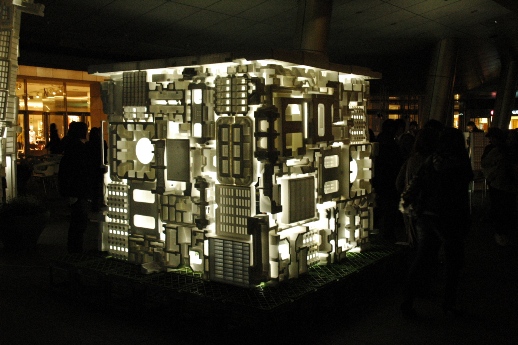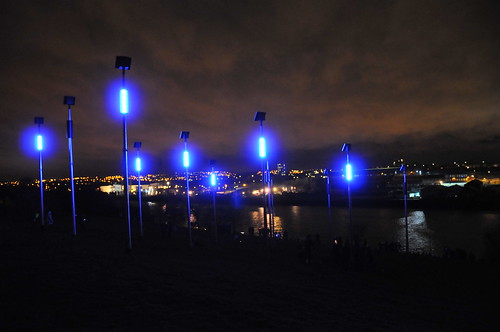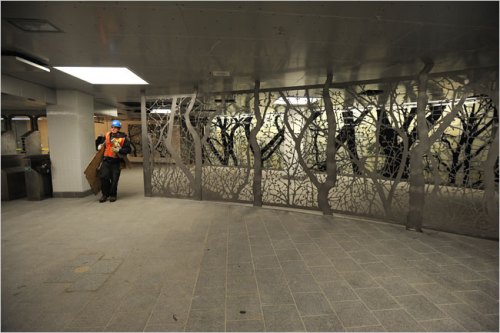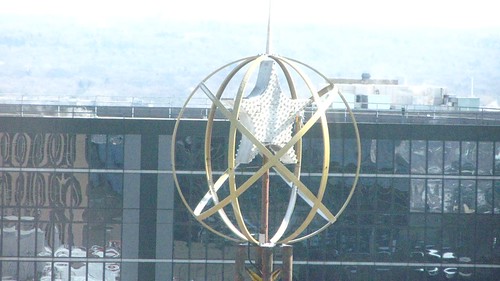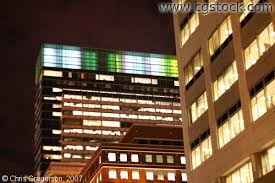“On the rare occasions I venture into Roppongi it always confirms what I think about the place: it’s full of rich people shopping and ayashii foreigners with girl(s) in tow. It’s a place of cold, pristine department stores, contrasted with glaring, depressing ‘gentlemen’s clubs’. Somewhere in this mess you get the Blue Man Group, the Mori building, a large spider sculpture…and Super Deluxe.
“So, I was a little cynical about Roppongi Art Night. Would it just be a cheesy corporate occasion? Would it just be ignored by folks heading to night clubs? Indeed, the critics would be quick to point out that the art works haphazardly on display were meaningless, that more thought had gone into how best to achieve a light effect than in creating an interesting art work. The whole thing was simply a series of keitai snap-shot opportunities for youngsters on dates.
“Well, perhaps they would be right. But for me it did not detract from the enormous, positive energy I felt navigating the Mori complex and stumbling upon weird goodies. All the works were exciting, visually arresting (and yes, achieved for the most part by light effects). The overall idea seemed to be to make as strange a playground as possible and to put things in unlikely spots, to do things you didn’t think possible.”
William Andrews via Tokyo Art Beat
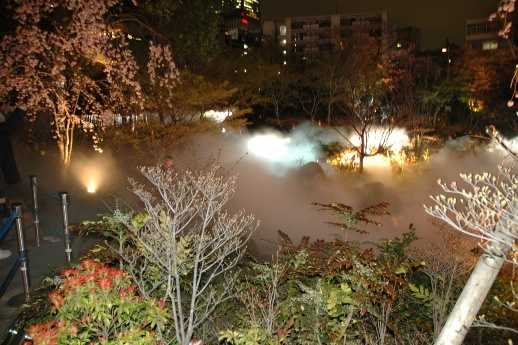
Fujiko Nakaya’s “Fog Garden #47662” was just that: the Mori garden was shrouded in a beguiling mist. Photo: WA

There was a matsuri-like atmosphere, with a plethora of stalls and eateries. Photo: WA
